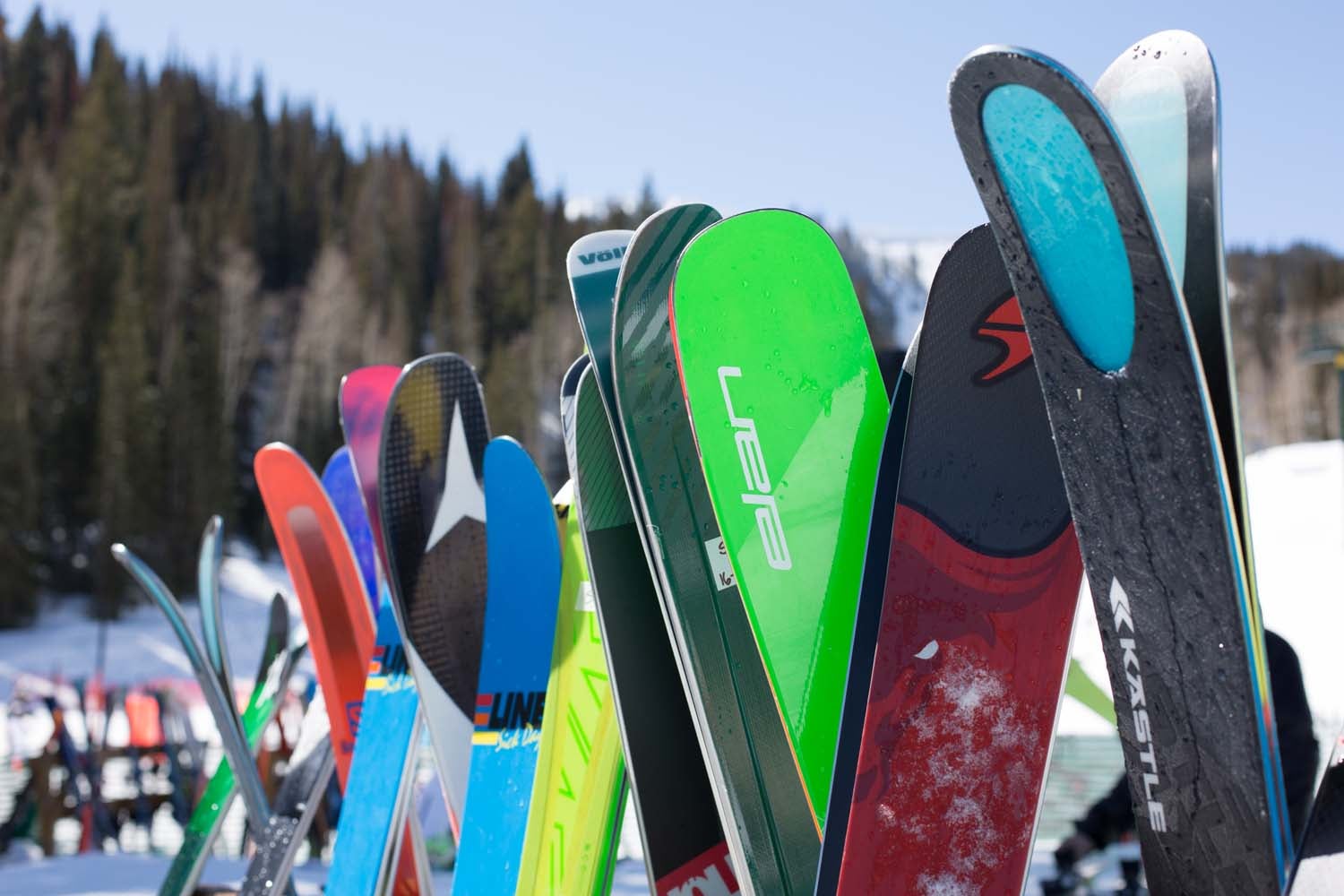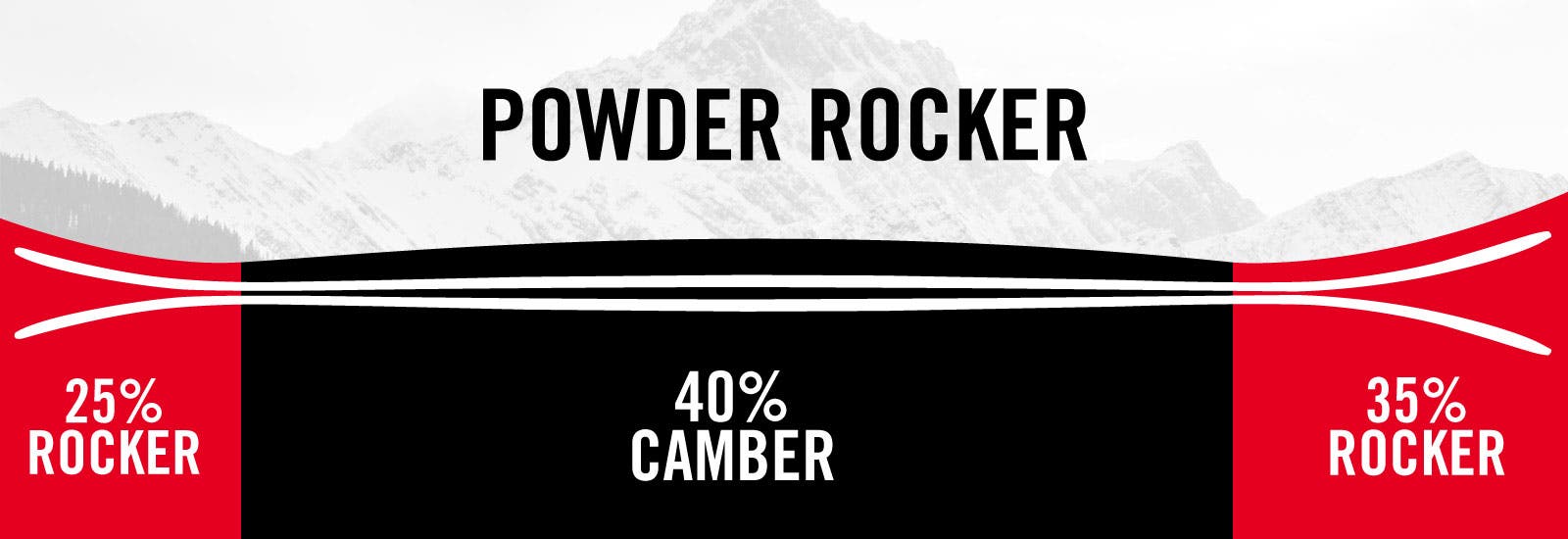Understanding Rocker vs. Camber Ski Technology

Almost every ski on your shop’s wall this season incorporates some kind of rocker technology. Need a little help understanding what “rocker” means when it comes to a ski’s profile, and how a rockered ski will perform for you? Below we offer a brief vocab review and explain the main differences between a traditional camber profile versus rocker profile.
Cambered Skis

Around 1850, Norwegian Sondre Norheim revolutionized downhill skiing by incorporating camber—a convex, underfoot arch—into the skis he constructed. An unweighted cambered ski touches the ground at two contact points, just behind the tip and just in front of the tail, while the middle of the ski is elevated a few centimeters off the ground. By distributing a skier’s weight from the center of the ski to its tip and tail contact points, camber (paired with sidecut) improves turn initiation, agility, stability and grip on firm snow. For the next 150 years or so, camber construction was standard in virtually every alpine ski and snowboard. Camber makes for quick, forceful turn initiations, especially when combined with deep sidecut. In deep snow, however, the tips have a tendency to dive and sink.
Rockered Skis

In 2001, Shane McConkey and Volant turned ski construction on its head, literally, with a new construction style called reverse camber. Later, people started calling it rocker. A concave, underfoot arch means that a ski with full rocker or reverse camber will contact the snow directly under the bindings while the tip and tail curve up from the center like a smile. Combined with a wide waist, rocker improves float in deep snow. Early adopters took the rocker profile to the extreme, building it into super fat skis—some with reverse sidecut—that were a dream in bottomless powder but squirrely and tough to control on anything else.
Camber/Rocker Blend

As groundbreaking as camber and rocker each were in their own right, the real magic comes from blending the two. Ski designers are constantly experimenting with the amount and placement of rocker, camber, and sidecut to harness the performance benefits of each. These days, almost every pair of skis on your shop’s wall incorporate some degree of rocker, in the tip, the tail or through the full profile of the ski. The sales guys will insist it’s good for everyone and that rocker will make you a better skier. Is that true? Well, yes: In the right dose and when used as directed, rocker is a performance enhancer, especially in deep snow, variable snow conditions, and terrain. Rockered tips and tails make turn initiation and release easier and smoother, and allow skiers to pivot the ski more as opposed to tipping skis on edge to complete a turn.
Pros of Rockered Skis
- Require less effort to initiate and release turns
- Require less precision
- Rocker makes a ski more versatile and adept at tackling crud, bumps, and powder
- Increases float because tips (and tails) are lifted above the snow and prevent skis from diving into deeper snow
But there are some drawbacks to a rocker profile. The more rockered a ski is, the less effective edge it has. In the above illustration, only 40-percent of the ski’s edge will consistently connect with the snow when it is pressured by the skier. The tip and tail will remain lifted off the snow. The downside to this is that a ski with a lot of rocker and less effective edge will not perform as precisely on hard snow and on groomed runs. You will not be able to carve a rockered ski the same way you can carve a traditionally cambered ski, or a ski with more camber and a more modest rocker profile.
Cons of Rockered Skis
- Rocker decreases the amount of effective edge on a ski
- Rocker decreases edge grip on hard snow and groomed terrain
- Rocker often decreases stability at speed
That said, the drawbacks of a rockered profile are generally outweighed by the versatility and performance-enhancing traits rockered skis offer, so that these days, it’s no longer a question of “if” you want your skis to be rockered, but “how much” rocker you want. To figure that out, you need to ask yourself what type of terrain and snow conditions you ski most often.
More Gear Content
How to Buy Skis
Gear Glossary: Ski and Boot Terminology
Best All-Mountain Skis of the Year
Best Frontside Skis of the Year